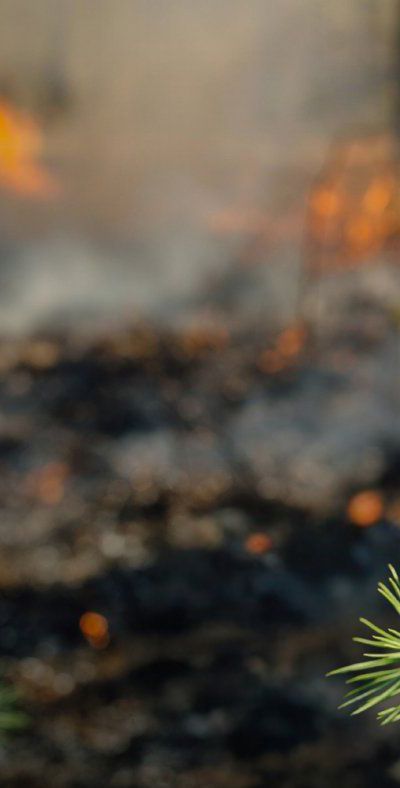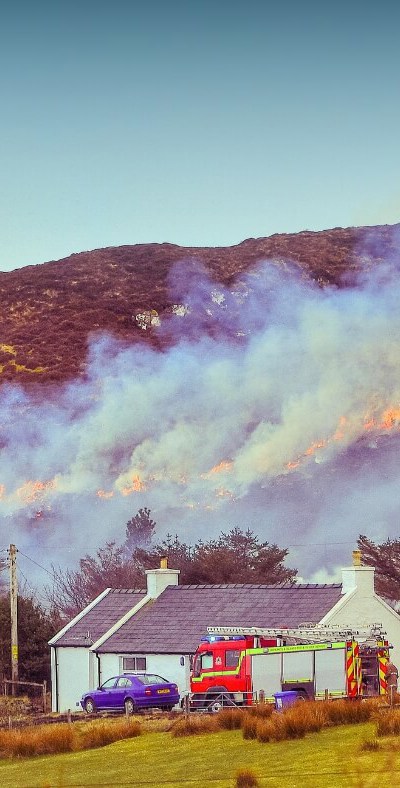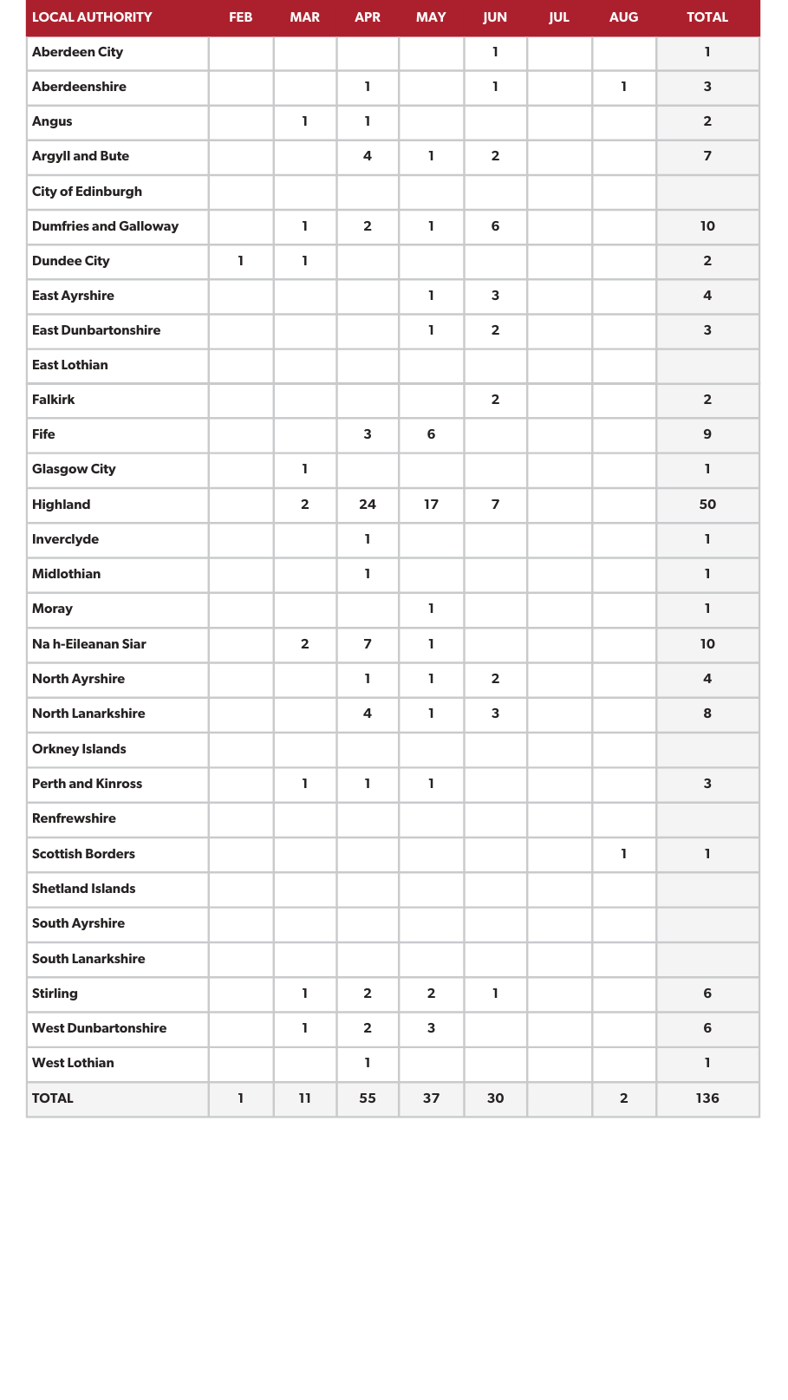Understanding wildfires in Scotland
Find out what a wildfire is, how they start, the impact they have, and how climate change is affecting them.
One wildfire every day on average during peak period in Scotland. Firefighters tackled an average of one wildfire every day across Scotland during Spring and early Summer last year.
New statistics from the Scottish Fire and Rescue Service (SFRS) show that 133 incidents of wildfire were recorded between March and June 2023, typically the busiest time of the year for wildfires in Scotland.

48 of those wildfires were recorded in the category for the largest area of damage, spreading to over a hectare each.
More than one third (50) occurred across the Highlands and a further ten across Na h-Eileanan Siar.
Across the remainder of Scotland, there were ten incidents of wildfire across Dumfries and Galloway, nine recorded in Fife, eight in North Lanarkshire and seven in Argyll and Bute.
Due to a prolonged dry and warm period in June, SFRS witnessed an intense period where multiple wildfires across Scotland were occurring simultaneously.
This included two of largest wildfires recorded last year, at Cannich near Inverness and the Ardnamurchan peninsula in Kinlochmoidart which involved hundreds of firefighters and community partners committed over several weeks.
One wildfire every day on average during peak period in Scotland.
Speaking as Scotland’s national fire and rescue service launched its wildfire prevention campaign, Deputy Assistant Chief Officer (DACO) Bruce Farquharson, SFRS Wildfire Lead said: “Wildfires are extremely dangerous as they can spread rapidly over many hectares of land.
“Careless behaviour is often the root cause of wildfires which have the potential to burn for days or weeks, placing a significant drain on our crews.
“With sensible precautions, the public can play a crucial part in preventing wildfires from damaging wildlife, environment and rural communities.”

When Scotland is most at risk of wildfires, our crews are notified by the Scottish Wildfire Forum who issue a wildfire danger assessment which highlights the areas most likely to be affected.
DACO Farquharson added: “When there is an active wildfire warning in place, we would ask people not to start a fire outdoors.
“Even with the best of intentions, there is still a risk that fire can spread. For example, if you light a campfire and don’t fully extinguish it before you leave, it can have devastating consequences.
“People should also ensure other items such as cigarettes are disposed of safely and responsibly.”
The SFRS wants the public to better understand the conditions which wildfires thrive in.
During the colder months, frost can remove the moisture from vegetation on the ground and leave it tinder dry.
Similarly in the Spring or summer, very warm and dry conditions can leave the ground primed to fuel a fire.
Strong winds added to any of the conditions above can determine how much a wildfire spreads.
More practical tips and guidance, as well as any active Wildfire Danger Assessments, can be in our wildfire section on this website.
Figures below show total wildfires recorded across Scotland from February to August 2023. They are broken down by Local Authority areas.
Please note wildfires are classed as 'large outdoor fires’ with over 1,000 square metres of burned area on appropriate land types. Burned areas of 10,000 square metres are the equivalent of one hectare.

Find out what a wildfire is, how they start, the impact they have, and how climate change is affecting them.
Guide to reporting wildfires if you are outdoors or at home, and how to report suspicious behaviour
Learn about our wildfire strategy for preventing and dealing with wildfires in Scotland.